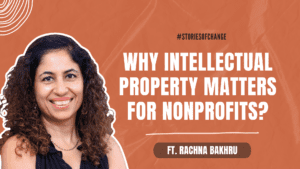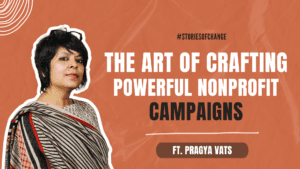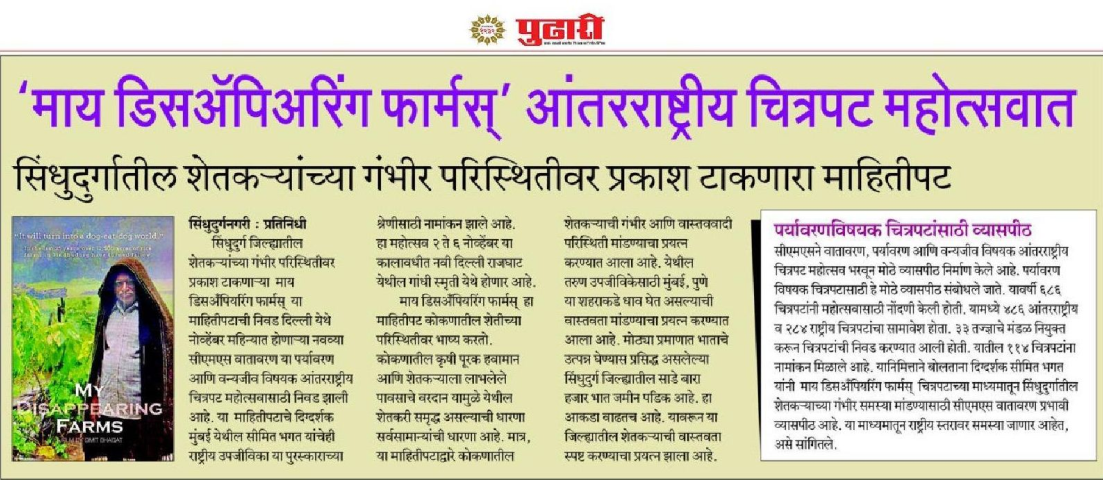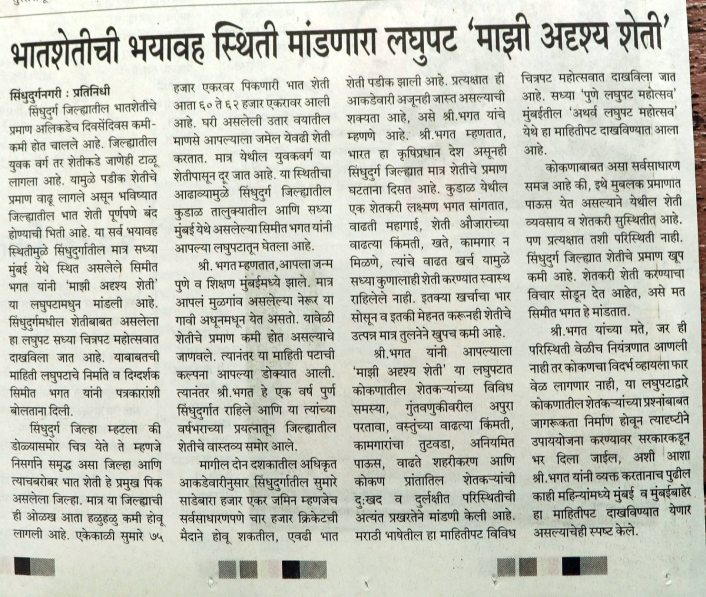In this episode of ‘Stories of Change‘, we navigate the evolving landscape where nonprofits intersect with climate change. Our guest, Roli, a seasoned journalist, shares valuable insights into how nonprofits can effectively weave climate change into their narratives without compromising their core mission focus.
Roli Srivastava is a Mumbai-based award winning journalist and Founder of The Migration Story. She reports on just transition, gender, migration and inclusive economies, focusing mainly on India’s marginalised communities. Over the last two decades, she has worked with a range of media organisations including Thomson Reuters Foundation, The Hindu and The Times of India. She has won the Fetisov Journalism Award and the Laadli Media and Advertising Award for Gender Sensitivity for her investigation on a health scandal in rural India robbing women of their wombs.
Transcript of the Episode:
Simit: Thank you for agreeing to be on this podcast. It’s really a pleasure to have you here.
Roli: It’s a pleasure to be here, Simit. Thank you so much for having me.
Simit: Today, climate change has become a really important topic, not just in India but across the world. We are already seeing the impacts of climate change in many ways. Whether it is in this piece of agriculture or whether it is about rising temperatures or changing rainfall patterns. Nonprofits play a very crucial role in a lot of things. And in today’s time, when climate change is becoming such a big issue, I want to delve deeper into the role nonprofits can play in addressing this issue.
“Nonprofits play an important role in addressing climate change.”
You have been covering climate change-related issues for quite some time. So maybe we could start by talking a little bit about your work as a journalist in the context of climate change.
Roli: Thank you, Simit. So I have reported on the impact of climate change on some of the most marginalised communities in India.
I have reported from various Indian states that are navigating excessive heat and floods of unseasonal rain, which are impacting agriculture. I have looked at the mitigation mechanisms that are being tried out for these floods in the country. How successful are they? What are the challenges in those projects in terms of achieving scale? So I’ve done that. I also look at the entire language and spectrum from the angle of emissions as well, because as a just transition journalist, I’ve looked at communities that are dependent on fossil fuels for a living. We will see a phase out of coal and they will lose their only livelihood option.
So while that is like the biggest villain in the entire climate change dialogue, it is around fossil fuels and their phase-out. But there are communities that are dependent on that. So that’s what has been a big part of my reporting. But at the same time, I would bet that if these emissions are not brought down right now, what happens to communities in other parts of the country? Communities that are tackling unseasonal rains, which have impacted their crops. They’ve lost their yields because of an extremely risky business, which has pushed up migration numbers as well.
“Climate change has made agriculture an extremely risky business.”
So that’s been my broad spectrum of reporting on the subject. And you mentioned INGOs and how they are in the midst of all these multiple challenges. So they could be nonprofits working in education; they could be nonprofits looking at women ‘s involvement or whatever. But yet there is now the climate change overlap that I see as a journalist in all of these subjects.
There’s not one subject or one department. If we look at it through the lens of government departments, there’s not one issue that is not affected by the other. So these all need to work together, which is what I see when I go reporting.
Simit: So while climate change is happening on a global scale, there is a discussion which is happening about the numbers.
While we know that the larger impact is from a numbers point of view, what is that human impact? Could you talk a little bit about that as well?
Roli: Absolutely. I’m so glad you asked me that question. We often tend to lose the human voice in the bigger discussion. This has been the endeavour for me and many other climate journalists are doing in the country right now, which is bringing to forth, the impact on people.
Farmers are increasingly growing cash crops to tide over yield concerns. Because there’s unseasonal rain, they grow more cash crops so that they can recover the losses. So the land that they keep for fodder cultivation has been shrinking, which has led to a rise in fodder prices. Now people who were earlier just reaping this fodder harvest from their backyard are forced to buy fodder from the market. This demand has led to a rise in prices.
“Farmers are increasingly growing cash crops to tide over yield concerns.”
What was the impact that I felt when I went to that village? It was in my presence in that district that women were mortgaging their gold to buy it for them. Now the gold in an Indian woman’s hand is insurance. It is her saving; it is a cushion against any financial crisis that gives her agency of the houses. Well, so they were mortgaging the gold to buy fodder. They felt that keeping the livestock alive was more important than keeping this gold in their house.
The gold wasn’t yielding anything, but the livestock was yielding milk. They always had curd and buttermilk, and the children were healthy. So that’s one impact. These are the connections that come out when you start discussing the impact of failing crops or the impact of changing cultivation patterns.
Simit: So, I mean, coming to what we were just talking about in terms of nonprofit and social impact organisations, they have a huge role to play when it comes to addressing social issues. So we saw that during COVID time as well. The organisations in the social sector who stepped forward and were able to ensure that people had access to vaccines or people had access to healthcare facilities and that was a huge role they played during the pandemic.
How do you reach out to these communities that are like the last mile? How do you reach out to these people, and how do you reach out to these communities? And it is the organisations in the social sector who kind of stepped forward and were able to ensure that people have access to the vaccines or people have had access to health care facilities.
In the case of climate change, how do you see that happening? Because today, obviously, people are going to feel the impact of climate change differently, whether it is in this space of agriculture. So how can that shift happen? How can organisations position themselves today? Given that there is interest from the government, international donors, as well as Lexie’s donors, there is huge interest in supporting climate initiatives.
How do you think organisations can leverage this and position themselves as one of the things that they are working on?
Roli: So the connection should actually be organic. The organisations that are working on the ground with rural communities or with marginalised communities, and all that needs to look fun or is needed, to go out of their way to make that connection for whatever purposes you just mentioned, that connection is important to establish for solutions on the ground.
Now, whether or not they get funding for it, I do not know. But I do know for a fact that solutions on the ground are much needed to navigate the climate crisis right now. And those solutions can be heard when organisations that make their first initial, whether they’re working on education or whether they’re working with agriculture, with farmers, or whatever, irrespective of the field of the connection with climate change, are more or less organic.
“Solutions on ground are much needed to tackle the climate crisis effectively.”
I’ll give you an example here. There is the burning coalfield of Jharia and Jhar, which is like every person living in the Jharia coal field or nearby or in its vicinity depends on coal for a living. But, hypothetically, if there’s a nonprofit working in the field of education, it would absolutely defeat the purpose if that organisation is not talking about green skill training, green jobs, and all of that in that region.
So, if I’m a nonprofit working in that region, it would just defeat the purpose. If I just look at educating these children with it, if I’m not education, not something, and not look at the bigger picture, that, okay, I need to speak to the government or the local district administration that let’s get some green job skill training over here, or I speak to the skill training centres over there, or if I’m speaking to my funders or whatever, and ask them about if they plan to put up a Skilling institute or something.
“Non profits must look at the bigger picture and incorporate that into their initiatives.”
So let’s train these kids for these jobs, for a centralised sector that is only set to grow from here on. So that’s one of the others. Now, the climate angle in these projects. For example, in agricultural projects, it could be a millet project or a natural farming project.
There are various initiatives that are taking place, and they are doing extremely well. There’s a lot of good work that’s happening, and there is a good response as well from local communities to these projects. But the selling point is not the climate. The selling point is that it’s good for you; it’s good for soil health or whatever.
But if organisations make that connection, if organisations do this conversation on the ground because they have set solid networks across food workers with the villages and all of that, if organisations make it absolutely clear that this is the impact of climate change that they’re already experiencing, it’s just contextualising their experience, corroborating it with what’s happening globally, that this is the whole climate crisis.
“Non profits should contextualise their experience to the global picture.”
What you are experiencing is part of a global crisis. This is what the future looks like over the next ten years or whatever. This is going to be the impact of farming. What? So once you quantify losses, once you quantify the impact on how it’s impacting a livelihood, a life, or an income, the uptake of these projects will improve. People who are a little cynical and will give in to my farm need not be as cynical.
If I think of this, if I sign up to do so much farming, if I don’t use fertilisers or pesticides, it will be healthy for the soil. But if that firm also starts realising it’s also healthy for his or her income, that’s where the uptake of these projects will improve. People who are a little cynical say that okay,farm yield will not be as much if I take up this project. If I sign up to do natural farming, if I don’t use fertilisers or pesticides, it’ll be healthy for the soil, but if that farm also starts realising it’s also healthy for his or her income, that’s where the uptake of these projects improves.
So it makes eminent sense that if we are all working towards a solution, everything needs to arrive at a solution. If we are facing a crisis that took place, then how do we arrive at the solution? The solution is in connecting these ongoing conversations with the larger climate dialogue and speaking to the people that you’re working with, that nonprofits are working with, telling them about this, contextualising what they’re experiencing in the global dialogue, so that they understand that what they are experiencing is not an aberration but more or less a norm. And it’s only going to worsen in the years to come. And what they can do to cushion themselves from this blow. So these are the kinds of connections that I see emerge organically. As a journalist when I go on the field, when we start talking to the farmers, no one will use the word ‘climate change’, because they may not know the terminology of climate change, but they are all experiencing it.
“Non profits should connect the on-going conversations with the larger climate dialogue.”
They’ll say, Yeah, it’s been like ten years since it rained, or every year we have unseasonal rains. At least one harvest cycle is ruined. So they know they are experiencing the impact, but they don’t have the terminology for it. So it makes sense for organisations to start working on this vocabulary if they start using it themselves. They have such great connections on the ground; people start using them, and I’m sure the solutions will then come.
Simit: Do you see an opportunity for organisations to actually develop projects related to this, just working with farmers who are developing the vocabulary? As you rightly mentioned, and it’s something that I have seen as well, farmers are already experiencing the impact, and they may be saying it in their own words, but they may not necessarily be connecting it to the larger issue of climate change.
Roli: Oh yeah. Farmers have the most poetic way of explaining climate change. Like I met one in Bundelkhand when you were talking, Simit, I just remembered, and he said the most beautiful thing: “Jab mai chhota tha toh barish ka badal mujhe pata tha kiss kone se ayega, par wo badal 10 saal se dikha hi nahi.”. So they have the most poetic way of explaining the changes, and it just requires, I think, it just requires for the organisations to make them understand, or possibly for the farmers to make the organisations understand that they know a lot and how these observations are important in building projects or in tweaking projects that are already being implemented or projects that are being planned for this scoping work that is going on. But why is it important to include these voices and observations in those projects?
“Farmer’s observations are important in building projects related to climate change.”
Simit: Yeah, I totally agree with that. Good. Yeah. And yeah, I thought that was a really beautiful story, what you shared. The farmer is from Bundelkhand. And yes, even when I was doing my film about farmers in Sindhudurg, Maharashtra, the next generation does not want to continue farming anymore because farming is no longer a profitable occupation to do.
Roli: Yeah, Simit, I’ll just like, which is exactly the reason, as in, I’m sorry to flood the migration story over here, but that’s exactly the reason it was these gaps that my fellow journalist Anuradha and I saw while reporting on the rising rural distress, the rising impact of climate change, and all of that.
And it was for these reasons that we launched “The Migration Story,” because, as you said, the younger generation is not interested in farming, and it won’t be interested in farming unless there are solutions on the ground in rural India to cushion the impact of climate change on agriculture. So agriculture is an expensive business. You’re spending so much on farming now, so if the yields are not good enough, then why would you spend so much, and why would you want your child to be doing the same risky business as you spend your life doing? Which is why there’s this exodus, right? People are leaving for cities
“Younger generation won’t be interested in farming unless there are efficient solutions on the ground.”
Simit: So typically, when you get stories, like when organisations tell you stories, they are sharing stuff that may be of journalistic interest for you.
So typically, what are those things from a climate point of view? What are the things that really interest you as a journalist? And what are the kinds of pitches that really stand out?
Roli: To be honest, while there are a lot of organisations working on climate, very few are working at the intersection of climate and communities.
The pitches that would come to us would not be about stories that explore these two together. The impact, or whatever. It’s for us to go on the field and find out if there is a connection or not, but when it would answer your question, when an organisation is able to establish that connection, then for the story that we are working on, it becomes a hefty addition to the story because these organisations are working with the people that you’re writing about, and they’ve worked with them for a considerable period of time.
So when we speak to organisations, when I speak to an organisation, I always try to figure that out. Have they also observed it? I found this when I was there for three days, five days, or whatever. But have you also observed this because you’ve been there for the last ten years? And then they’ll say, yes, of course. So you have made that connection.
It does not figure in the conversation that you have initiated with the journalist.
Simit: I think the issue is also because, a lot of times, organisations may know about the issue or have seen the connection, but they may not necessarily think that is important for a journalist.
Roli: Yeah.
Simit: And I think it’s a process that organisations will have to be mindful of. But if I could ask you, what are the things that you think would actually help them? Like, how can they start looking at it from that angle? Or the way you are looking at it? What is it that they need to do?
Because I think at this point, because they have never done it, they may not necessarily know how to do it or kind of bring these connections, but is there anything that you think could sort of help them make these connections more effective, like basically being more aware of these connections?
Roli: I think just tuning into the climate dialogue, the kind of reporting that’s going on, and drawing parallels to the work that they are doing would be a first step.
“Non profits should tune in to the climate dialogue and draw patterns.”
And I think I can’t say this enough because I feel that with a lot of nonprofits, they are doing excellent work, but they are focused on the area of work, which is great. But I think if they just have to engage a little more and a little differently with people who are already working with them, they are absolutely comfortable talking to them.
I think the effort also has to come from the climate think tanks of people working in the climate space to engage with nonprofits that they would not engage with, thinking that they are not working in climate.
So it’s not just for the nonprofits to work differently, to include climate in their work, or whatever. It’s also for the larger climate community to engage nonprofits in the kind of work that they are doing, or that they think these nonprofits will add value to the conversation. So the engagement has to be from their end as well.
“The larger climate community should engage with non profits and reach out to them.”
Simit: Right Yeah, I think that has been a very meaningful conversation. It was lovely to speak to you, as always. And it was good to kind of talk about this issue, because while there is a lot of debate and discussion that is happening around climate change, I think the one part that is being missed right now, which I see needs to come out a lot more, is looking at the human impact of climate change.
What is the actual impact on the people at the grassroots level—people in villages, what is that? What is the impact that they are having or they are having to face because of climate change? I think that is one piece which is missing right now. And I’m glad I had the chance to speak to you about this topic.
Roli: Thank you again for having me. It was a very good discussion and an important one. And I’m sure once nonprofits start integrating climate in their conversations and in their work, life becomes a little easier for climate journalists also, because we will then get the kind of voices and perspective that we so badly need to build up stories because ground reporting is only half the battle. We have to corroborate what we see as the ground reality with the experience of those who are working with the communities in those regions. So, yeah, great conversation, then. Thank you. Thank you so much. Really, have a lovely evening. Yeah, thank you. Bye bye.










